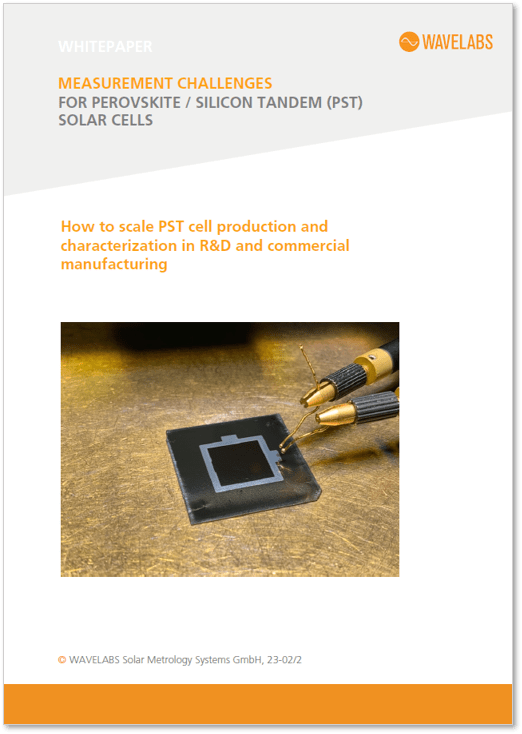Who would have thought that a few decades after its grassroots beginnings, PV has become a $183 bn industry? By early 2022 already 1 TW1 of PV installations were moving us into a zero-carbon world. Of course, the success of renewable energy boils down to its efficiency. Since commonly used single-junction crystalline silicon (c-Si) cells are limited to maximum efficiency of approximately 29 %2, multi-junction cell designs have moved into focus to help us address the urgency of our climate crisis.
Multi-junction PV cells maximize energy conversion across the entire light spectrum and achieve a world record efficiency of currently up to 47.6 %4. Unfortunately, for decades industry-scale utilization of multi-junction PV has been out of question due to its high levelized cost of energy (LCOE). Typically, they were applied in space5 to power satellites and the ISS. The progress achieved in the 2,000s and with it the reduction of the LCOE,
opens the way for Perovskite Silicon Tandem (PST) cells to become commercially available. After more than a decade of intensive research and development, PST cells will become an important industry-scale solution for tackling the climate crisis within the next years.
This whitepaper investigates what it means for solar cell producers to add Perovskite/ Silicon Tandem (PST) cells to their portfolio. We examine the special characteristics of PST cells and discuss testing requirements.
Finally, we introduce an approach that provides all necessary characterization
functions for pre-conditioning with a permanent and adjustable light source,
EQE capability, Pmpp tracking and spectral characterization.
Download the full white paper directly on the WAVELABS website.

